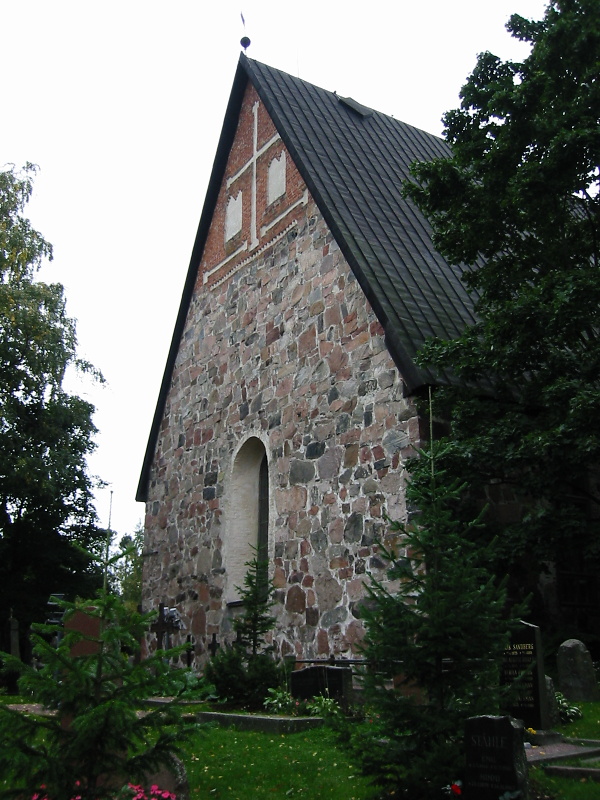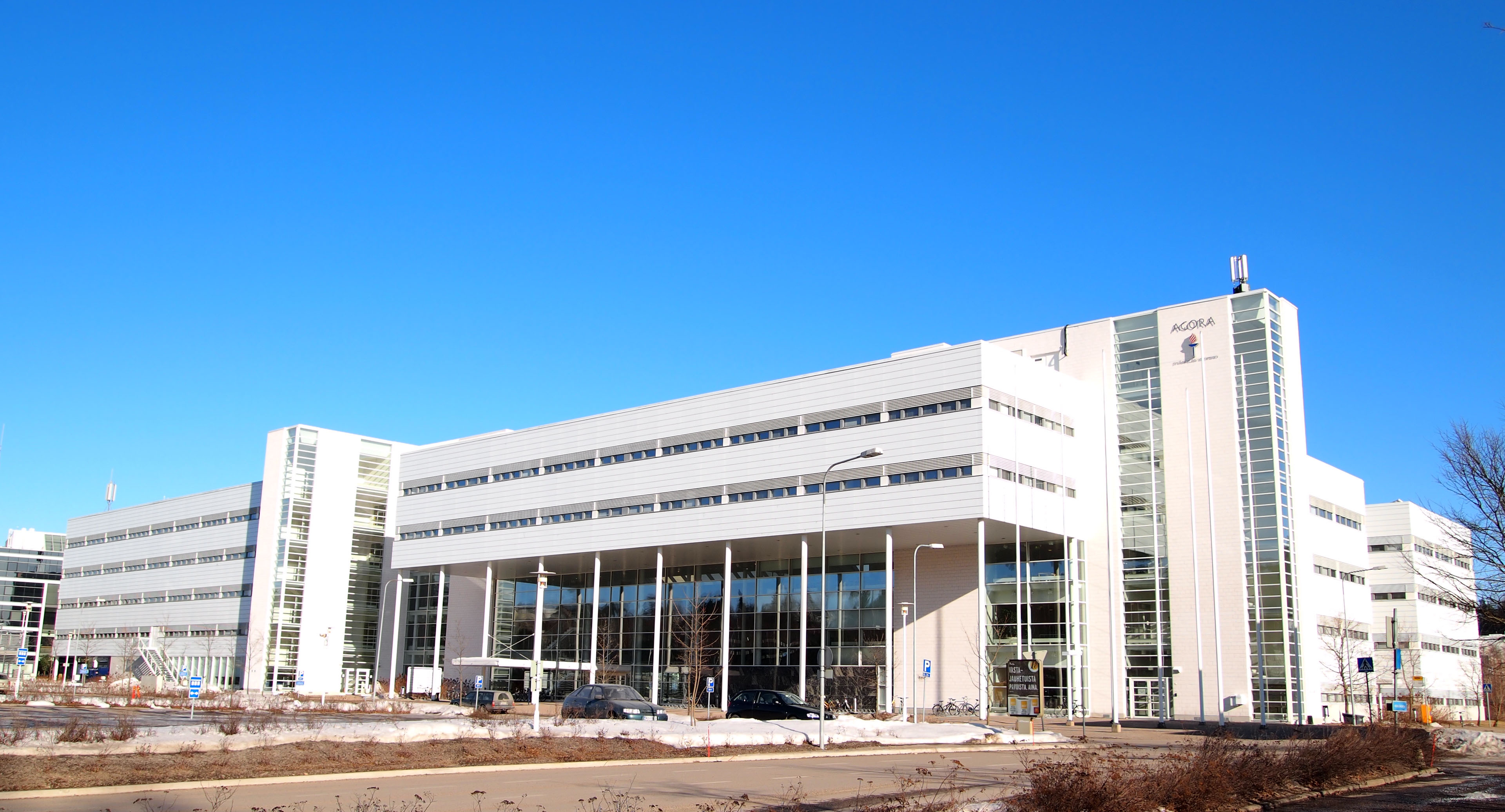|
Arto Sipinen
Arto Sipinen (20 March 1936 – 23 December 2017) was a Finnish architect. He worked in the office of architects Alvar Aalto in 1959–61 and Viljo Revell in 1961–63. He founded his own architect's office in 1965. Sipinen has taught at Helsinki University of Technology Department of Architecture. In 1970 Sipinen won the architectural competition for the design of a new campus at the University of Jyväskylä, his former employer Aalto having designed the first campus. Among Sipinen's other best known works are the cultural centres for the cities of Espoo, Mikkeli, Imatra and Kuusamo Kuusamo ( sme, Guossán; smn, Kuáccám) is a town and municipality in Finland. It is located in the Northern Ostrobothnia region. The municipality has a population of () and covers an area of of which is water. The population density is . .... References *Vilhelm Helander, ''Modern Architecture in Finland'', Kirjayhtymä, Helsinki, 1995. External links 1936 births 2017 deaths ... [...More Info...] [...Related Items...] OR: [Wikipedia] [Google] [Baidu] |
Helsinki
Helsinki ( or ; ; sv, Helsingfors, ) is the Capital city, capital, primate city, primate, and List of cities and towns in Finland, most populous city of Finland. Located on the shore of the Gulf of Finland, it is the seat of the region of Uusimaa in southern Finland, and has a population of . The Helsinki urban area, city's urban area has a population of , making it by far the List of urban areas in Finland by population, most populous urban area in Finland as well as the country's most important center for politics, education, finance, culture, and research; while Tampere in the Pirkanmaa region, located to the north from Helsinki, is the second largest urban area in Finland. Helsinki is located north of Tallinn, Estonia, east of Stockholm, Sweden, and west of Saint Petersburg, Russia. It has History of Helsinki, close historical ties with these three cities. Together with the cities of Espoo, Vantaa, and Kauniainen (and surrounding commuter towns, including the eastern ... [...More Info...] [...Related Items...] OR: [Wikipedia] [Google] [Baidu] |
Finland
Finland ( fi, Suomi ; sv, Finland ), officially the Republic of Finland (; ), is a Nordic country in Northern Europe. It shares land borders with Sweden to the northwest, Norway to the north, and Russia to the east, with the Gulf of Bothnia to the west and the Gulf of Finland across Estonia to the south. Finland covers an area of with a population of 5.6 million. Helsinki is the capital and largest city, forming a larger metropolitan area with the neighbouring cities of Espoo, Kauniainen, and Vantaa. The vast majority of the population are ethnic Finns. Finnish, alongside Swedish, are the official languages. Swedish is the native language of 5.2% of the population. Finland's climate varies from humid continental in the south to the boreal in the north. The land cover is primarily a boreal forest biome, with more than 180,000 recorded lakes. Finland was first inhabited around 9000 BC after the Last Glacial Period. The Stone Age introduced several different ... [...More Info...] [...Related Items...] OR: [Wikipedia] [Google] [Baidu] |
Espoo
Espoo (, ; sv, Esbo) is a city and municipality in the region of Uusimaa in the Republic of Finland. It is located on the northern shore of the Gulf of Finland, bordering the cities of Helsinki, Vantaa, Kirkkonummi, Vihti and Nurmijärvi while surrounding the enclaved town of Kauniainen. The city covers with a population of about 300 000 residents in 2022, making it the 2nd-most populous city in Finland. Espoo forms a major part of a substantially larger metropolitan area known as Greater Helsinki, home to over 1.5 million people in 2020. Espoo was first settled in the Prehistoric Era, with the first signs of human settlements going back as far as 8,000 years, but the population effectively disappeared in the early stages of the Iron Age. In the Early Middle Ages, the area was resettled by Tavastians and Southwestern Finns. After the Northern Crusades, Swedish settlers started migrating to the coastal areas of present-day Finland, and Espoo was established as a ... [...More Info...] [...Related Items...] OR: [Wikipedia] [Google] [Baidu] |
Helsinki University Of Technology
Helsinki University of Technology (TKK; fi, Teknillinen korkeakoulu; sv, Tekniska högskolan) was a technical university in Finland. It was located in Otaniemi, Espoo in the metropolitan area of Greater Helsinki. The university was founded in 1849 by Grand Duke of Finland, Emperor Nicholas I and received university status in 1908. It moved from Helsinki to Otaniemi campus area in 1966. It was merged into Aalto University in 2010 and briefly had the name Aalto University School of Science and Technology before being split into four schools in 2011. Much of the university's Otaniemi campus was designed by Alvar Aalto. History In 1849, TKK was established in Helsinki by the decree of the Russian Emperor Nicholas I, Grand Duke of Finland as a "manufacture and handicraft school", with the name ''Helsingin teknillinen reaalikoulu/Helsingfors tekniska realskola'', along with two other similar schools, situated in Vaasa and Turku. The school started its function in the Domus ... [...More Info...] [...Related Items...] OR: [Wikipedia] [Google] [Baidu] |
Architect
An architect is a person who plans, designs and oversees the construction of buildings. To practice architecture means to provide services in connection with the design of buildings and the space within the site surrounding the buildings that have human occupancy or use as their principal purpose. Etymologically, the term architect derives from the Latin ''architectus'', which derives from the Greek (''arkhi-'', chief + ''tekton'', builder), i.e., chief builder. The professional requirements for architects vary from place to place. An architect's decisions affect public safety, and thus the architect must undergo specialized training consisting of advanced education and a ''practicum'' (or internship) for practical experience to earn a license to practice architecture. Practical, technical, and academic requirements for becoming an architect vary by jurisdiction, though the formal study of architecture in academic institutions has played a pivotal role in the development of t ... [...More Info...] [...Related Items...] OR: [Wikipedia] [Google] [Baidu] |
Alvar Aalto
Hugo Alvar Henrik Aalto (; 3 February 1898 – 11 May 1976) was a Finnish architect and designer. His work includes architecture, furniture, textiles and glassware, as well as sculptures and paintings. He never regarded himself as an artist, seeing painting and sculpture as "branches of the tree whose trunk is architecture." Aalto's early career ran in parallel with the rapid economic growth and industrialization of Finland during the first half of the 20th century. Many of his clients were industrialists, among them the Ahlström-Gullichsen family, who became his patrons. The span of his career, from the 1920s to the 1970s, is reflected in the styles of his work, ranging from Nordic Classicism of the early work, to a rational International Style Modernism during the 1930s to a more organic modernist style from the 1940s onwards. His architectural work, throughout his entire career, is characterized by a concern for design as Gesamtkunstwerk—a ''total work of art'' in whic ... [...More Info...] [...Related Items...] OR: [Wikipedia] [Google] [Baidu] |
Viljo Revell
Viljo Gabriel Revell (25 January 1910 – 8 November 1964) was a Finnish architect of the functionalist school. In Finland he is best known for the design of the Lasipalatsi ("Glass Palace") and Palace Hotel, both in Helsinki. Internationally, Revell is best known for designing the New City Hall of Toronto, Ontario, Canada. Life and career Revell, originally spelt ''Rewell'', was born in Vaasa in 1910, and graduated from Vaasan Lyseo in 1928. He graduated as an architect from the Helsinki University of Technology in 1937. He made his architectural breakthrough already the year he graduated when he, together with fellow students Heimo Riihimäki and Niilo Kokko, won the architectural competition for the design of the Lasipalatsi, which had originally been intended as a temporary building comprising shops, restaurant and cinema, but which became one of the landmarks of Finnish "white functionalist" architecture. His next major work was the so-called Teollisuuskeskus (Indust ... [...More Info...] [...Related Items...] OR: [Wikipedia] [Google] [Baidu] |
University Of Jyväskylä
The University of Jyväskylä ( fi, Jyväskylän yliopisto) is a research university in Jyväskylä, Finland. It has its origins in the first Finnish-speaking Teacher Training College (the so-called Teacher Seminary), founded in 1863. Around 14,000 students are currently enrolled in the degree programs of the university. History Founded in 1863, the university has its origins in the first Finnish-speaking teacher training college, the so-called Teacher Seminary. Uno Cygnaeus was enthusiastic to educate the people and created a programme for organising primary school education in Finland. Cygnaeus' plan was realised in 1863, when a teacher seminary was established in Jyväskylä, on the current university campus. Based on the town's central location, the first Finnish-medium secondary schools for boys and girls were also established in Jyväskylä. The foundation of the world-famous school system was created at the University of Jyväskylä. The teacher seminary evolved i ... [...More Info...] [...Related Items...] OR: [Wikipedia] [Google] [Baidu] |
Mikkeli
Mikkeli (; sv, S:t Michel; la, Michaelia) is a town and municipality in Finland. It is located in what used to be the province of Eastern Finland and is part of the Etelä-Savo region. The municipality has a population of () (around 34,000 in the town itself) and covers an area of of which is water. The population density is The town is located on lake Saimaa. Together with Savonlinna, it is one of the largest towns in the South Savonia region and one of the concentrations in the region's hospital districts. Mikkeli was the site for the headquarters of the Finnish armed forces during World War II. In recognition of this, the town's coat of arms incorporates a pair of crossed Marshal Mannerheim's batons, and the town was awarded the Cross of Liberty, 4th class, to be displayed with the coat of arms. History The earliest signs of human life in Mikkeli are the Astuvansalmi rock paintings in Ristiina, dating back to 4000-2200 BCE. The Astuvansalmi is the largest rock ... [...More Info...] [...Related Items...] OR: [Wikipedia] [Google] [Baidu] |





